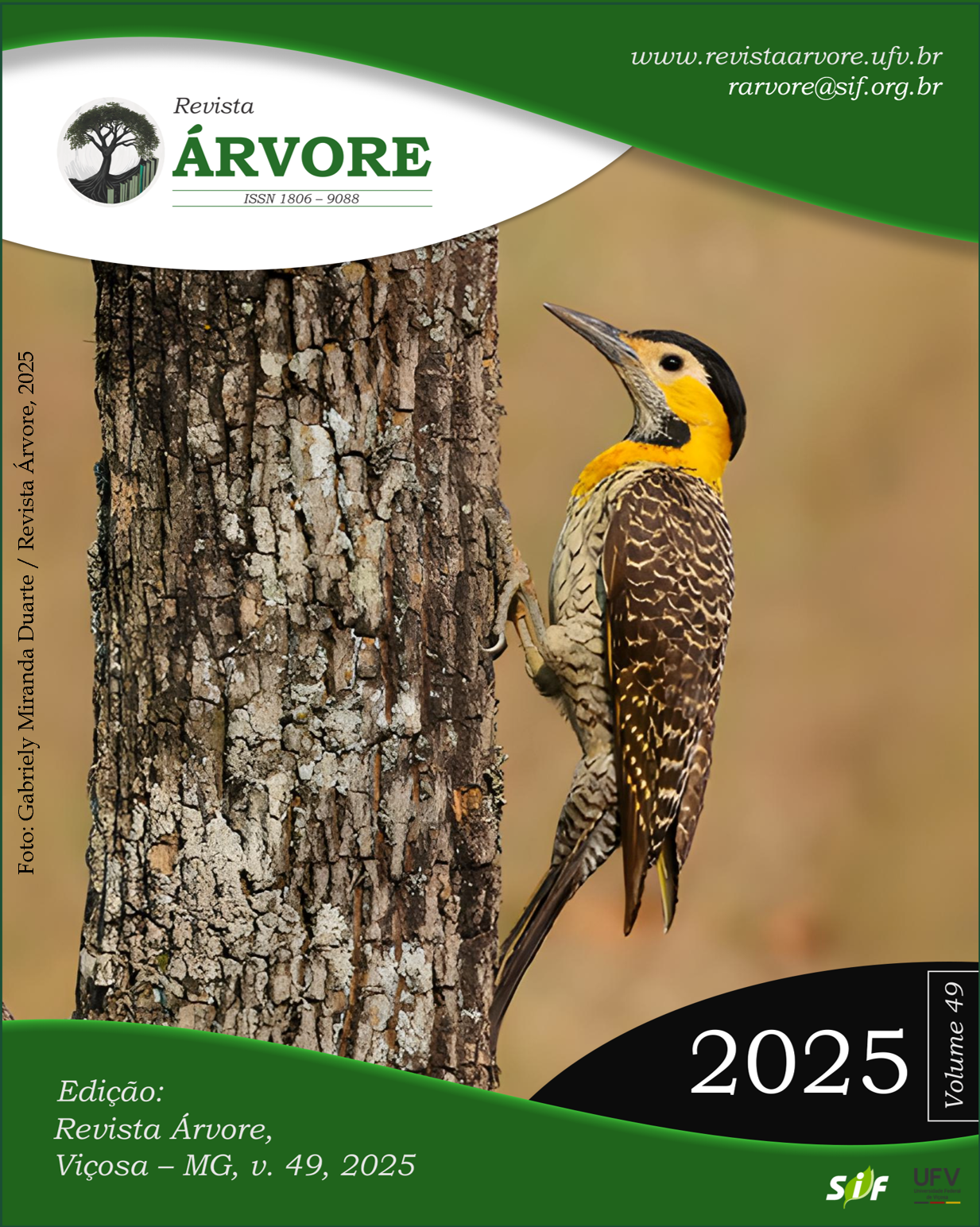Community assembly mechanisms of Pinus massoniana plantations under different climatic conditions
Functional traits and phylogenetic structure perspective
DOI:
https://doi.org/10.53661/1806-9088202549263930Keywords:
Functional traits, Community assembly, Pinus massoniana plantationsAbstract
Community assembly elucidates mechanisms of species coexistence and diversity maintenance in plant communities, providing a basis for sustainable forest management. However, studies on understory community assembly mechanisms in plantation forests across climatic zones are scarce. This study selected nine leaf functional traits, using methods based on functional traits and phylogenetic structure to investigate the community structure and assembly mechanisms of woody plant communities in Pinus massoniana plantations under varying climatic conditions in Guangxi, China. Key findings include: 1) Among the plant functional traits, LT, LTD, SLA, LDMC, LNCmass, and LKCmass are phylogenetically conserved. 2) Community structure based on functional traits was consistent with community phylogenetic structure in the woody plant communities of young P. massoniana plantation in southern and central subtropical Guangxi, middle-aged P. massoniana plantation in northern tropics and central subtropics, and overripe P. massoniana plantation in northern tropics, where the main driving force affecting community construction was habitat filtering. In contrast, in the middle-aged and overripe woody plant communities of P. massoniana plantations in southern subtropical Guangxi, functional traits tended to aggregate while phylogeny shifted from aggregation to dispersion, revealing a mismatch between them. Habitat filtering and similarity limitation were common driving forces in community assembly. 3) Community structure based on functional traits showed increased clustering with latitude in young and overripe forests, but decreased in middle-aged forests, reflecting climate-driven assembly shifts. Phylogenetic patterns across latitudes further indicate combined effects of habitat filtering and competition. Overall, understory woody community structure responds dynamically to climate, with functional and phylogenetic structures largely consistent. Community assembly is primarily shaped by habitat filtering, alongside a moderate influence of limiting similarity.
Keywords: Functional traits; Community assembly; Pinus massoniana plantations
Downloads
Published
How to Cite
Issue
Section
License
Copyright (c) 2025 Revista Árvore

This work is licensed under a Creative Commons Attribution 4.0 International License.
All authors agreed to submit the work to Revista Árvore and granted the exclusive license to publish the article. The authors affirm that it is an original work and has not been previously published elsewhere. The scientific content and opinions expressed in the article are the sole responsibility of the authors and reflect their opinions, not necessarily representing the opinions of the editorial board of Revista Árvore or of the Society of Forest Investigations (SIF).








